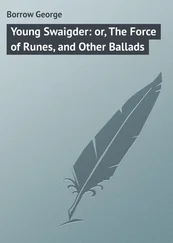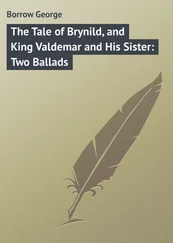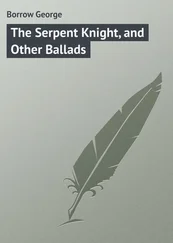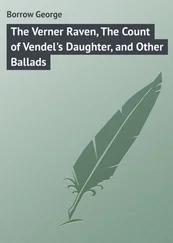George Borrow - Grimhild's Vengeance - Three Ballads
Здесь есть возможность читать онлайн «George Borrow - Grimhild's Vengeance - Three Ballads» — ознакомительный отрывок электронной книги совершенно бесплатно, а после прочтения отрывка купить полную версию. В некоторых случаях можно слушать аудио, скачать через торрент в формате fb2 и присутствует краткое содержание. Издательство: Иностранный паблик, Жанр: Поэзия, foreign_prose, foreign_poetry, на английском языке. Описание произведения, (предисловие) а так же отзывы посетителей доступны на портале библиотеки ЛибКат.
- Название:Grimhild's Vengeance: Three Ballads
- Автор:
- Издательство:Иностранный паблик
- Жанр:
- Год:неизвестен
- ISBN:нет данных
- Рейтинг книги:4 / 5. Голосов: 1
-
Избранное:Добавить в избранное
- Отзывы:
-
Ваша оценка:
- 80
- 1
- 2
- 3
- 4
- 5
Grimhild's Vengeance: Three Ballads: краткое содержание, описание и аннотация
Предлагаем к чтению аннотацию, описание, краткое содержание или предисловие (зависит от того, что написал сам автор книги «Grimhild's Vengeance: Three Ballads»). Если вы не нашли необходимую информацию о книге — напишите в комментариях, мы постараемся отыскать её.
Grimhild's Vengeance: Three Ballads — читать онлайн ознакомительный отрывок
Ниже представлен текст книги, разбитый по страницам. Система сохранения места последней прочитанной страницы, позволяет с удобством читать онлайн бесплатно книгу «Grimhild's Vengeance: Three Ballads», без необходимости каждый раз заново искать на чём Вы остановились. Поставьте закладку, и сможете в любой момент перейти на страницу, на которой закончили чтение.
Интервал:
Закладка:
Borrow George
Grimhild's Vengeance: Three Ballads
INTRODUCTION
Borrow and the Kjæmpeviser
The modern poetical literature of Denmark opens with a collection of epical and lyrical poems from the Middle Ages, which are loosely connected under the title of Kjæmpeviser or Heroic Ballads. Of these the latest scholarship recognises nearly 500, but in the time of Borrow the number did not much exceed 200. These ballads deal with half-historic events, which are so completely masked by fantastic, supernatural and incoherent imagery that their positive relation to history can rarely be discovered. Nevertheless, they throw a very valuable light upon the manners of mediaeval society in Scandinavia, and they are often of high poetical beauty. No conjecture can be formed as to the authors of these ballads, and even the centuries in which they were composed are uncertain. Grimm believed them to be uralt , and attributed them to the 5th and 6th centuries. But on linguistic grounds, this extreme antiquity cannot be maintained. It is now supposed that they were composed at various times between 1300 and 1500, and that in their present form they bear the stamp of the period when they were first collected by the Danish antiquaries of the sixteenth century.
The circumstances in which this famous collection of folk-songs came into public notice were of a romantic nature. Sophia, Queen of Denmark, when sailing across the Sound in the year 1586, was driven by stress of weather to take shelter in the little island-harbour of Hveen, where the famous observatory stood, close by the house of the astronomer, Tycho Brahe. It so happened that at that very time Brahe was entertaining as a guest the most eminent Danish man of letters of that age, Anders Sörensen Vedel (1542–1616). Vedel, whose labours were encyclopædic, was engaged in preserving all the monuments of Danish mediaeval history and learning which he could discover in the monasteries and libraries of Denmark. He had been much encouraged in this work by the Monk of Roeskilde, Peder Olufsen, who on his death-bed, about 1570, had placed in Vedel’s hands all the MSS. which he had collected. Queen Sophia, cloistered in the Ouranienborg with her antiquary and her astronomer, and waiting for the tempest to moderate, desired to be amused with stories of her national history. Vedel ventured to read to her some of the legendary poems which still lingered among the people, and she was so enchanted with them, that she commanded him, when he returned to the mainland, to make a collection of these ballads and publish them.
Accordingly, in 1591, Vedel issued from the private printing-press in his house called Liljeborg at Ribe in Jutland, a selection of 100 mediaeval ballads, under the title of Et Hundred udvalgte danske Viser . This volume is one of the landmarks of Scandinavian, and indeed of European, literary history. Vedel made another collection, this time of ancient love-ballads, which he called Tragica ; it was not published until 1657, long after his death. But the volume of 1591 is the fountain-head of all that has since been written about the Heroic Ballads of the North, and it is impossible to overrate the services of Vedel in preserving what was even then ready to disappear. It seems, moreover, that he was careful of the text, and later scholarship has come more and more to place confidence in his transcripts.
This was, unfortunately, not the case with the next pioneer in the same field, although he deserves great credit also. Peter Petersen Syv (1631–1702) was a very able philologist, who was also a minor poet of ambition. In 1695 he reprinted and edited Vedel’s text, adding 100 more kjæmpeviser which had been unknown to Vedel. But his work was not so well done; Syv was something of a pedant, and unfortunately either too critical or not critical enough. He ventured to correct the irregularities of the ballads, and not seldom has spoiled them. He bore the proud title of Philologer Royal of Denmark, and he was above all things else a grammarian. But he added to our store of Ballads. No one, during the eighteenth century, advanced on the labours of Vedel and Syv, and their treasuries of beautiful anonymous poetry seem to have attracted no attention in the rest of Europe.
But in the first decade of the nineteenth century, in consequence of what we call the Romantic Revival, poets and scholars in many countries turned simultaneously to the treasure-house of Danish balladry. Jamieson’s work, to which I shall presently return, dates from 1806; about the same time Herder translated one or two kjæmpeviser in his Stimmen der Völker , and in 1809 Wilhelm Carl Grimm started his full translation, under the title of Altdänische Heldenlieder , Balladen and Märchen , which appeared in 1811. But it appears that Grimm had heard and perhaps even seen the proofs of a Danish edition of the very highest importance, the Udvalgte Danske Viser fra Middlealderen , the first volume of which was brought out by Abrahamson, Nyerup and Rahbek in 1812. 1 1 The question of priority is rather obscure, but it appears, from a letter written by Grimm in February, 1813, in reply to the critics of his work, that his translation was begun in 1801, when he was not aware of the work undertaken by Abrahamson, Nyerup and Rahbek, but that before his book was published, Nyerup communicated to him some of the results of the investigations of the three Danish editors. Grimm seems to have worked upon an edition of Syv published in Copenhagen in 1787, which accounts for the corrupt state of some of Grimm’s text. A good deal of unpleasant controversy was awakened on the subject, but all this has now long slumbered under the dust of a century.
Abrahamson dropped out, but the work was completed by the others, the fifth and last volume appearing in 1814.
Borrow’s relation to these texts must now be considered, and it offers some difficulty. In 1826 he published a volume of verse entitled Romantic Ballads translated from the Danish , and in the preface he uses these words: – “I expect shortly to lay before the public a complete translation of the Kiæmpé Viser, made by me some years ago.” It is necessary to bear in mind that there are these two collections of Borrow’s translations from the kjæmpeviser , the second of which, as we shall see, he did not contrive to publish.
No doubt, he was anxious to emphasise the novelty and rarity of his literary adventures. But his attitude to Jamieson is very strange. As early as 1806 Robert Jamieson (1780–1844) had published a volume of Popular Ballads , in which he had translated several of the kjæmpeviser and had pointed out their value in relation to the ancient Scottish poems of a similar kind. Sir Walter Scott paid much flattering attention to Jamieson’s work, which also attracted a good deal of notice in Denmark and Germany, and inspired the Drei altschottische Lieder of G. D. Gräter (1813). It is scarcely possible that Borrow was not aware of all this, yet he never mentions the name of Jamieson, and in 1826 he spoke boldly of himself as breaking into “unknown and untrodden paths.” It is not impossible that Sir Walter Scott’s patronage of Jamieson had something to do with the ungenerous petulance of Borrow’s references to the great novelist in Lavengro
Конец ознакомительного фрагмента.
Текст предоставлен ООО «ЛитРес».
Прочитайте эту книгу целиком, купив полную легальную версию на ЛитРес.
Читать дальшеИнтервал:
Закладка:
Похожие книги на «Grimhild's Vengeance: Three Ballads»
Представляем Вашему вниманию похожие книги на «Grimhild's Vengeance: Three Ballads» списком для выбора. Мы отобрали схожую по названию и смыслу литературу в надежде предоставить читателям больше вариантов отыскать новые, интересные, ещё непрочитанные произведения.
Обсуждение, отзывы о книге «Grimhild's Vengeance: Three Ballads» и просто собственные мнения читателей. Оставьте ваши комментарии, напишите, что Вы думаете о произведении, его смысле или главных героях. Укажите что конкретно понравилось, а что нет, и почему Вы так считаете.












